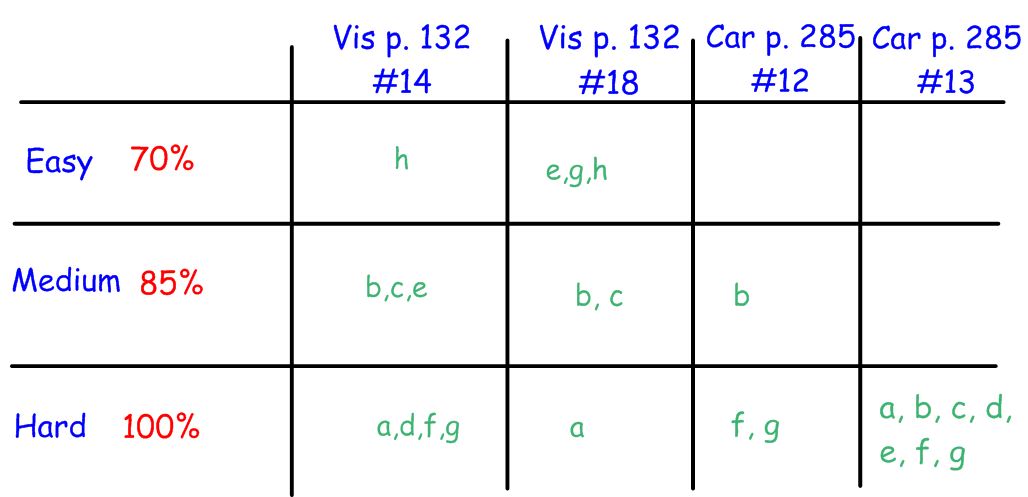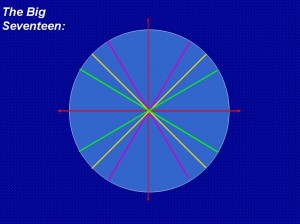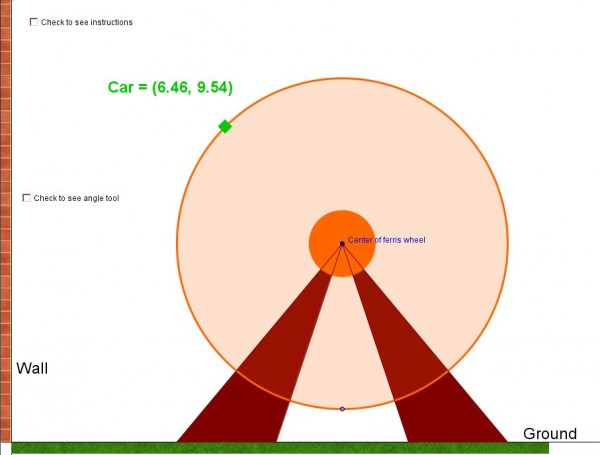Due date: Friday, March 28. More details to come about what I’ll be looking for, possible bonus points, how it will be assessed etc, but I thought you might like to start thinking about this in the meantime:
The blog post
This blog post will be about the VFW, from week 24, the one for which you already created graphs, before you knew anything about trig functions. Remember these?
Your job now is to get these same graphs to appear by figuring out their rules and typing them into either Desmos OR Geogebra. Your post should include:
- Explanations for how you arrived at the rules, including each of the parameters.
- An explanation for what each parameter represents on the ferris wheel (ie radius, speed, etc)
- A desmos OR a geogebra that validates your rules (can be embedded or a link, but it has to be functioning, not a static snapshot). The x axis must be in seconds, not degrees or radians.
- Each of your rules must be accompanied by a second alternative but equivalent rule.
The Story Behind the Blog post
You’ll be doing this part first! You will develop and polish your blog post in epearl.
- Just like when you did the geogebra assignments, you will upload the various versions of your graphs as well as your blog posts. You may type your drafts directly into the epearl text editor, or do the posts in Word and attach each version of the Word document.
- This time I will assume that the final versions are the ones that appear on your blog.
- Your artifact must include a task description, criterion list, and at least 2 versions of the graph-post, each version accompanied by reflections. This is so that I can give you feedback as you work, and also so that you can learn not only about trigonometry, but also about learning.
Some suggestions for your reflections:
- Reflections on this assignment:
- Any incredible insights you had while doing this assignment, and what brought them about, a conversation, a good night’s sleep…
- Anything that you found easy, and why you think it was easy
- Anything you found difficult, and why you think it was difficult
- What you did to try overcome any difficulties
- Any connections you notice to something else we studied this year, anything at all that you were reminded of, and why
- Your thoughts on the impact of doing these graphs first without any trig knowledge, then reproducing them with the theoretical background – help, hindrance, or meh?
- Reflections about your progress:
- A direct quote from an earlier epearl reflection that shows you’ve progressed since then (or regressed, but hopefully not)
- A successful strategy you used before that worked again on this assignment
- Your thoughts on Desmos compared to Geogebra – which one, if any, has helped you in your comprehension, and how?
Here are some examples, from my own blog, of your reflections on past assignments, all good, all the kind of thing that’s worth writing down: example 1, example 2.
Just so you know, I don’t ask you to do anything I don’t do myself, so for an example of learning accompanied by self-reflection, I invite you again to read a post I did on my own blog about logs. Self-reflective AND full of selfies too!







